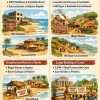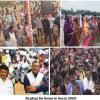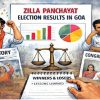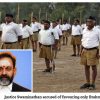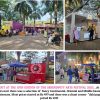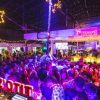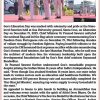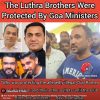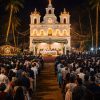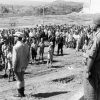Goa is abuzz with excitement as vintage bike and car owners, users, collectors and fans are decking […]
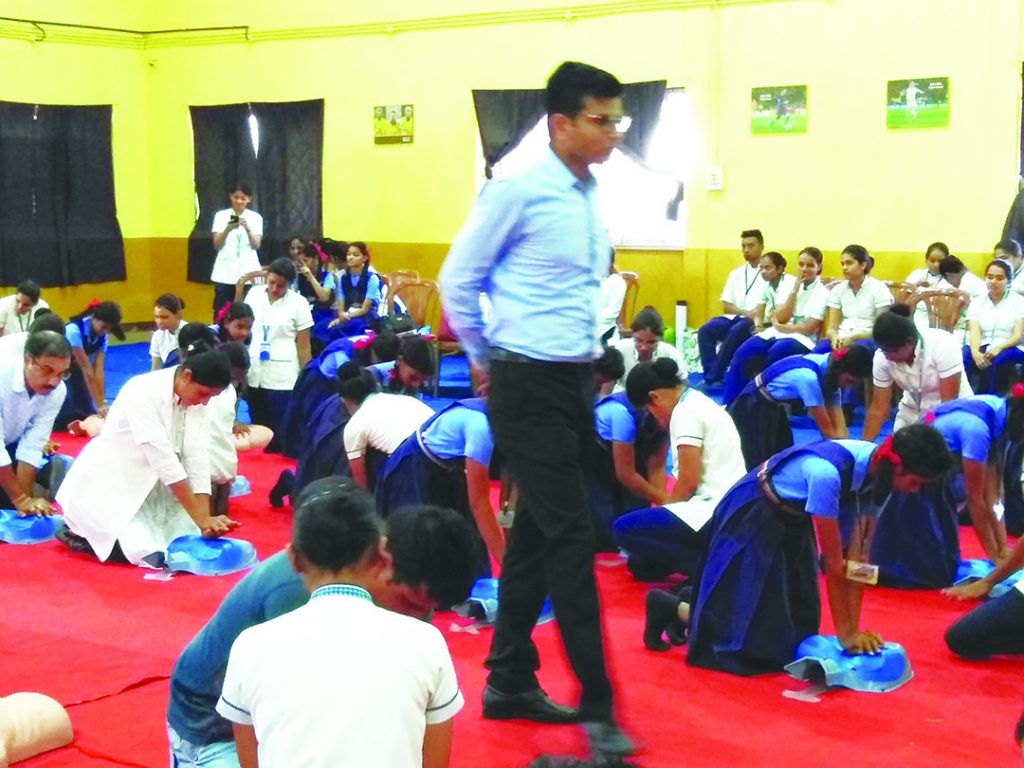
WANT TO LEARN CPR TO BE A LIFESAVER?
Feb 23- Mar 01 2019, Life & Living February 23, 2019Mega camp for teaching life-saving technique CPR to students and individuals at the DMS Kushe Higher Secondary School in Mapusa on Feb 17: Mostly schoolchildren lined up to learn all about cardio pulmonary resuscitation (above) camp underway; training was imparted by Dr P Maheshwar Reddy and team of the GMC Alumni Education Centre in Hyderabad; in the automated external defibrillator room to learn about automatic shock treatment machines available in selected public places or special kiosks abroad
By Our Special Correspondent
IT was an intriguing idea that anyone may learn cardio-pulmonary resuscitation (CPR) to save someone’s life in an emergency situation. It is a widely known fact that heart attacks or cardiac arrest happen anywhere, anytime, to anyone in public or in private at home, and this is happening increasingly amongst the young generation these days. Perhaps it’s with this in mind that the ever active Rotary Club of Mapuca in association with the Indian Red Cross Society (Bardez & Goa), Vrundavan Institute of Nursing Education, GVK EMRI and JCI Mapusa decided to organise a CPR workshop to teach anyone young or old how to do CPR in a moment’s notice, at the sprawling complex of the DMS educational campus in Mapusa, on February 17, 2019.
It was a quite a mega affair judging by the long queue there by noon. Needless to say most were students in uniform from various schools, plus a scattering of adults including a couple of senior citizens keen on learning how to save a life in a jiffy. Knowing how to perform CPR can save a life in an emergency situation when medical help and a hospital cannot be easily accessed. You never know when you may save a life if you know how to do CPR and use an AED machine. As young Dr Shayam Hussain at the AED room said, “Heart attacks or cardiac arrests are happening to younger people nowadays and apart from CPR it is useful to know how to operate an AED (automated external defibrillator) unit to shock a cardiac arrest patient…even a school kid can do this if he or she is well trained!”
After registration one made one’s way up the stairs to a hall to watch an American Heart Association video on the efficacy of CPR in saving life. After that groups were formed and directed to the AED room where Dr Hussain and his team demonstrated how the AED or external defibrillation units operated on dummy models — in many advanced countries these kits are at hand at airports, railway stations, bus stations, malls and other places which see large gathering of people.
If anyone’s heart gets into trouble in public there is usually someone around who can use the AED unit to save a life if need be. Once the kit is broken open and instructions read it has to be quick work. The electrodes put in place on the body, the appropriate button switched for a diagnosis about whether the patient needs shock treatment or not, and then it’s pretty much on auto mode and one just follows instructions.
It is not as simple as it sounds. In this case the AED machine’s instructions in American English would be difficult to understand in your typical Indian scenario (unless one is familiar with American English and usage of such a machine). But perhaps this is just a matter of manufacturing AED machines for Indian conditions. AED actually operates on a series of compression-and-shock treatment with beeps to guide whoever is attending to an emergency cardiac arrest patient. Quite a serious matter from the looks of it and as Dr Hussain commented, “It’s very useful if AED units are available in public places and trained folk know how to make good use of it…in cardiac arrest the idea is basically to preserve brain function until the patient gets to hospital.” Giving the patient 100 compressions per minute is something most can learn given the energy, knowledge, training and practice. This makeshift AED room was for demonstration and watching only to get the idea across and how to react in real life scenarios.
Last but not least of all anyone may learn to do routine CPR. In another large hall it was scene to take in with school children (teenagers) being guided into performing CPR on human torso dummies! Looks easy but surely takes quick reflexes and supple, energetic movements: doing a 100 compresses a minute on an unconscious patient can whip up a sweat for those who lead a sedentary life. A professional team led by Dr P Maheshwar Reddy of the GMC Alumni Education Centre in Hyderabad was conducting the CPR training here and said Dr Maheshwar, “We integrate AED and CPR cardiac camps. In cardiac arrest the race is to get blood pumping to the brain within as soon as possible, for the brain is the most sensitive organ in the body. You have a window of five to ten minutes max before tissues start to die… ”
In emergency lifesaving situations their instructions are to first be safe and comfy (you can’t give CPR in middle of road with traffic!), then call for help, after that check the patient to make sure it is cardiac arrest…in stroke cases patient is usually conscious. Once sure of cardiac arrest commence CPR until AED arrives…or ambulance and the patient rushed to hospital.” Usually, in his experience, Dr Maheshwar said, “The first AED shock given is 80% effective, the second shock 30% …after that there is something called shock-able rhythm and there’s no limit to giving shock as long as patient is breathing.”
In the queue up to learn about CRP and AED were hospitality staff from Ocean Hotel in Calangute and to a query Anthony d’Souza replied, “Sometimes in hotels situations come up when we have to help and this is useful to know, so we are here.” Two English guests who were with them had come along out of interest as observers, responded Lyn Woolley, “Oh I learned CPR with the St John Ambulance people long ago when I was younger in the UK. Most airports in the West have these CPR kiosks in place where emergency situations can be dealt with quickly and effectively…” She and her husband Richard were staying at the Ocean Hotel and had decided to come along to see how the CPR workshop was conducted.
CPR should be taught in all schools and colleges, community halls and clubs across Goa — in small batches rather than mega workshops in half-an-hour! Apart from life-saving techniques the Indian Red Cross Society, Rotary and other clubs and their allies could also impart preventive healthcare, the secret to better nutrition, importance of yoga or an exercise regime to stay fit and happy. Informal education can go a long way towards making up for the limitations of formal education.

